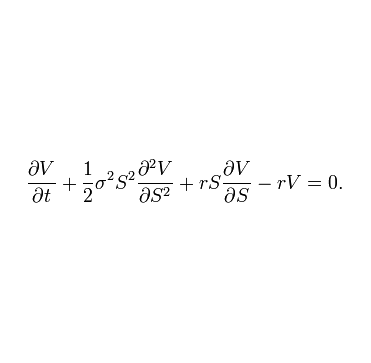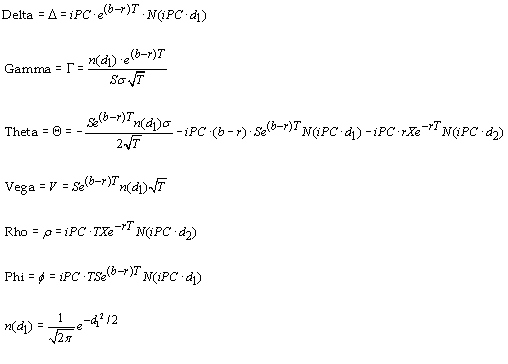BLACK SCHOLES OPTION PRICING MODELS
Post on: 23 Май, 2015 No Comment

In order to understand the model itself, we divide it into two parts. The first part, SN(d1), derives the expected benefit from acquiring a stock outright. This is found by multiplying stock price [S] by the change in the call premium with respect to a change in the underlying stock price [N(d1)]. The second part of the model, Ke(-rt)N(d2), gives the present value of paying the exercise price on the expiration day. The fair market value of the call option is then calculated by taking the difference between these two parts.
Assumptions of the Black and Scholes Model:
1) The stock pays no dividends during the option’s life
Most companies pay dividends to their share holders, so this might seem a serious limitation to the model considering the observation that higher dividend yields elicit lower call premiums. A common way of adjusting the model for this situation is to subtract the discounted value of a future dividend from the stock price.
2) European exercise terms are used
European exercise terms dictate that the option can only be exercised on the expiration date. American exercise term allow the option to be exercised at any time during the life of the option, making american options more valuable due to their greater flexibility. This limitation is not a major concern because very few calls are ever exercised before the last few days of their life. This is true because when you exercise a call early, you forfeit the remaining time value on the call and collect the intrinsic value. Towards the end of the life of a call, the remaining time value is very small, but the intrinsic value is the same.
3) Markets are efficient
This assumption suggests that people cannot consistently predict the direction of the market or an individual stock. The market operates continuously with share prices following a continuous Itф process. To understand what a continuous Itф process is, you must first know that a Markov process is one where the observation in time period t depends only on the preceding observation. An Itф process is simply a Markov process in continuous time. If you were to draw a continuous process you would do so without picking the pen up from the piece of paper.

4) No commissions are charged
Usually market participants do have to pay a commission to buy or sell options. Even floor traders pay some kind of fee, but it is usually very small. The fees that Individual investor’s pay is more substantial and can often distort the output of the model.
5) Interest rates remain constant and known
The Black and Scholes model uses the risk-free rate to represent this constant and known rate. In reality there is no such thing as the risk-free rate, but the discount rate on U.S. Government Treasury Bills with 30 days left until maturity is usually used to represent it. During periods of rapidly changing interest rates, these 30 day rates are often subject to change, thereby violating one of the assumptions of the model.














